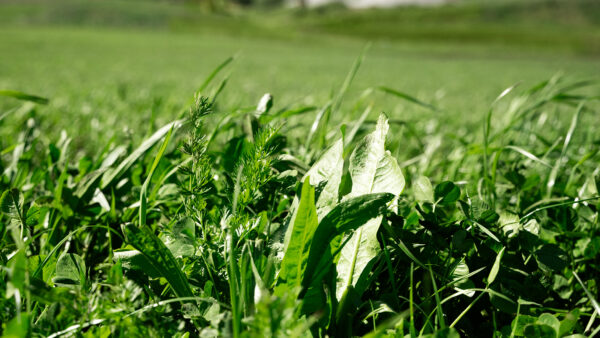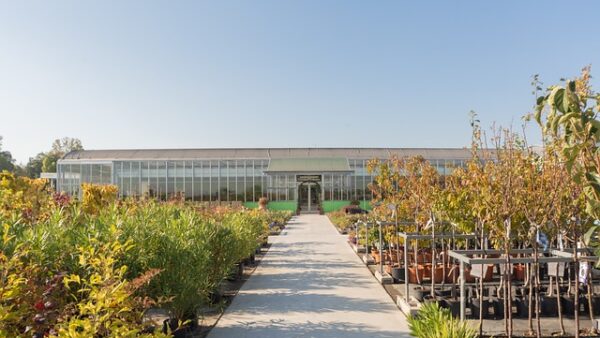How a unique public-private consortium is transforming sustainable agriculture and crop development.
Why it Matters:
Started in 2023, CropXR is an initiative of four Dutch knowledge institutions (Utrecht University, Wageningen University and Research, the University of Amsterdam, and Delft University of Technology) and the Dutch seed association Plantum. It is a unique public-private consortium that, apart from the universities, comprises scientific institutions, industrial partners and technology innovation companies. It unites the experts from a multitude of disciplines such as plant sciences, data sciences and the social sciences. It aims to make agricultural production less vulnerable to climate change and less dependent on artificial fertilizers and chemical pesticides, thereby also creating growth opportunities for relevant economic sectors in the Netherlands.
Seed World Europe spoke with Hedwich Teunissen, Managing Director at CropXR.
Seed World Europe (SWE): Hedwich, can you explain in a nutshell what your organization is doing?
Hedwich Teunissen (HT): CropXR aims to accelerate much-needed changes in agriculture. In today’s world we face enormous challenges such as climate change and reduced food security. Climate change affects agriculture in many ways. In the Netherlands, for instance, we have experienced an exceptionally wet season. An important crop such as the potato suffers from all the rain. Likewise, these weather conditions have marred the recent spinach yield. Farmers are struggling to overcome this kind of damage.
To withstand such environmental challenges, crops should be more resilient. CropXR is on a mission to make crops more resilient, climate-adapted and sustainable. New crop varieties should become less dependent on fertilizers and pesticides. In addition, they should be better capable of dealing with weather extremes, yet the quality of the produce and the yield should remain high.

This is not an easy task as plant resilience is genetically complex. Many genes interact when a plant experiences stressors such as flooding, drought or salinization. To unravel the building blocks of resilience, we need to examine it from a systems biology perspective.
Deploying such a holistic and interdisciplinary approach means studying the interconnected functioning of the entire plant. Computational and mathematical analyses are used for this. By gathering diverse data sets and deploying advanced technologies such as artificial intelligence, the CropXR team will develop mechanistic models. With these models, we aim to define and predict resilience traits.
This is the innovative smart data breeding approach that we envision. Eventually, breeders worldwide should be able to tap into this knowledge and use it to their benefit. We hope to contribute to reshaping agriculture and have a positive impact on the global food chain.
SWE: You have picked a number of crops to start with: brassicas, lettuce, onion, potato, tomato and chrysanthemum. Is your research limited to those crops, or will other crops be added in the future?
HT: For now, we have chosen a limited number of crops. This is connected to our 10-year plan and the feasibility of our work in this period. Our plan is divided into two phases.
The first five years, we conduct our research on Arabidopsis, a so-called ‘model’ plant that makes it very suitable for research. We concentrate on gathering experimental data and we use the wealth of knowledge of Arabidopsis that is available. With the help of AI, this data will be transformed into models that will give us insights into the inner workings of the involved resilience processes. Think of the links between genotype, metabolic pathway, cells and tissues, and external stress. These models allow an efficient translation of findings from Arabidopsis to crop species. Furthermore, they enable us to better understand crop resilience and how this can be improved.
Since we aim to deliver hands-on and concrete results, we will immediately apply these insights. We have, therefore, recently added the cauliflower to our selection. This so-called “flagship crop” will unite all our partners. We will immediately put the knowledge we gather to the test to improve the resilience of the cauliflower. We expect that this overarching project within our consortium will accelerate tangible outcomes.
In the ensuing five years, we will convert the fundamental knowledge we have gained into practical breeding tools for the six crops you mentioned. Tomato, lettuce, onion, brassica, and potato were selected for various reasons. They are important crops for the industrial partners in our consortium. Our partners have a lot of knowledge of these crops which can be used fruitfully. In addition, these crops are cultivated in many places around the world and are nutritional. The potato in particular feeds millions of people. Additionally, chrysanthemum is the most important ornamental plant in the Netherlands.
This diverse selection of crops gives us insights into resilience on many levels. Some of the crops are cultivated in greenhouses. These relatively controlled environments have their own challenges. Take, for instance, chrysanthemum that is bred and grown in a greenhouse. Thrips, slender insects, pose a severe threat to these crops. Just like they can severely harm practically every existing crop. How can chrysanthemum become more resistant to this insect, is one of the pivotal questions we try to answer. Crops that grow in the field, on the other hand, face other challenges. Excessive rain or drought, for instance, test the resilience of such crops in a different way.
Crops are genetically complex. The crops we selected represent this complexity. They vary in genome size, the number of sets of chromosomes in a cell or organism (ploidy level) and heterogeneity or other characteristics. Conducting research on genetically different crops is, therefore, very insightful.
By deploying our smart data breeding technology to our selected crops, we aim to deliver concrete results. Once our methodology is solid and yields good results, we would like to add other crops to our selection in the coming years. After ten years, we envision yet another expansion. Eventually, it should become possible to apply our models to every possible crop.
SWE: When we mention resilience in crops, and getting ready for climate change, most people then mention New Genomic Techniques (NGTs). Will CropXR also be using NGTs? And if so, how will you handle the regulatory aspects?
HT: NGTs can be part of the toolbox of researchers to gain valuable knowledge on plants. They can enable researchers to test how genes interact and unravel the complex processes that are connected to this interplay. This knowledge might contribute to necessary changes and improvements. We regard them as possible and additional tools that could accelerate experimental research in plant sciences. In addition, they might offer breeders increased velocity when developing resilient varieties.
However, it is important to note that CropXR is not dependent on NGTs to make progress. Moreover, we explicitly do not engage in political discussions on this matter. We intend to move forwards regardless of the transnational decisions on this topic. Our research and results do not rely on the final political outcome on this matter.
SWE: You are combining public and private sector research, and there are likely to be some very exciting innovations coming out of CropXR. How do you handle the intellectual property (IP) of all of this?
HT: Firstly, it is good to mention that our public and private partners are collaborating closely from the start and will continue to do so in the upcoming years. All partners invest in their own way and gain something from this investment.
We receive funding by institutions that stipulate that the fundamental research that we conduct should be accessible to everybody. In addition, CropXR develops practical tools, technology and innovations in collaboration with its industrial partners. In competing markets, such innovations tend to be protected by IP. Our industrial partners make financial investments and take risks. Consequently, the quid pro quo principle applies. Hence, the current CropXR partners are in the front seat to use the innovations that are being developed. This means that the IP of our smart data breeding technology is shared exclusively with the CropXR community.
We envision that CropXR will constantly make progress and evolve. In due time, therefore, we would like to welcome new partners and collaborations to enhance our impact. CropXR feels a responsibility to positively impact the earning capacity of the Dutch breeding industry. In addition, we aim to have societal impact and move towards a more sustainable agricultural ecosystem on a global scale. If other partners eventually join, whether it will be large or small enterprises, they should be able to use our IP at some point as well.
SWE: Can you tell a bit more about the methodology CropXR uses and how the concept of ‘smart data breeding’ works?
HT: In the last approximately 20 years, knowledge of the genome of many plants has become available to plant scientists. This has meant a tremendous leap forward. It has enabled plant scientists to make better predictions about the response of plants to stressors such as diseases and drought.
Today, we can make these kinds of predictions quite accurately when only a few genes and a single stressor are involved. However, when more than a few genes are at play this becomes a challenging if not daunting task. CropXR pursues the creation of new plant models that will provide insight into how the interplay of multiple genes together shape plant resilience. Instead of examining how one single stressor impacts a plant, we look at the effect of multiple stresses. They can be biotic, for instance, caused by bacteria. Or abiotic, for instance, temperature. Important questions include: Does this lead to trade-offs, which gene combinations are key determinants of resilience, and what outcomes can be expected? These questions relate to the breeding targets of the future.
CropXR finds itself on the verge of a new era in plant science in which the aim is to know and predict the intricate dynamics of complex traits and genes. To obtain these insights, new state-of-the-art methodologies are necessary.
We deploy, therefore, the methodology of smart data breeding. This means that we collect a large volume of measurements and combine various types of data sets to construct our models. First, we try to construct these models based on the earlier mentioned plant Arabidopsis. Compiling these models is an iterative process that will take time. We expect to be able to model Arabidopsis in the next couple of years, leading to a more refined model after approximately five years.
Subsequently, these models can be translated to specific crops. When this phase arrives, we will need significantly less crop specific data. Since the primary model is already available and it only needs to be adapted to a particular crop. This will make it easier to create so-called ‘spin-off’ models for other crops. Breeders can then use these models to step up their game.
SWE: AI is an important element of CropXR. Can you tell us more on the use of AI within your consortium and how you handle these enormous sets of data and who can access them?
HT: The size of the data sets is indeed quite overwhelming. Our data scientists estimate that our project will create a data volume of approximately several petabytes in the next years. However, bear in mind that this volume is relatively modest compared to the data used in, for instance, medical sciences or astronomy.
Machine learning can help us to summarize all the experimental data and use them for our models. Soon, we will commence our first experiment on drought and temperature stress in Arabidopsis. The experiment is currently being prepared and will run for approximately a year. During the preparatory phase, we are already using existing data sets. We summarize and analyze them and use them to fuel our first model versions.
We are keen on using high-quality data for our models since the accuracy of our models and predictions depends on this. Our team of data scientists, led by a dedicated technology director, is working on creating a robust data infrastructure to store, manage and access all this data properly and safely. It will be based on the FAIR principles (Fair, Accessible, Interoperable, Reusable). We intend to create an inclusive data culture. All those within the consortium should be able to access the data.
This solid foundation will lead the way to realizing one of our ambitions, which is to develop a ‘Resilience Hub’. This hub should be an extensive collection of knowledge on crop resilience. It will corral knowledge, data, tools and experts related to this subject. It will be a treasure trove for all those working in this field. We strive to realize this ambition in the years to come. The requirements and possibilities to access the hub by those outside the consortium will also be further developed in the coming years. We have only just started, and a lot of work needs to be done first. We are eager to keep all those in the seed sector informed on our progress and deliver cutting-edge results in due time!













